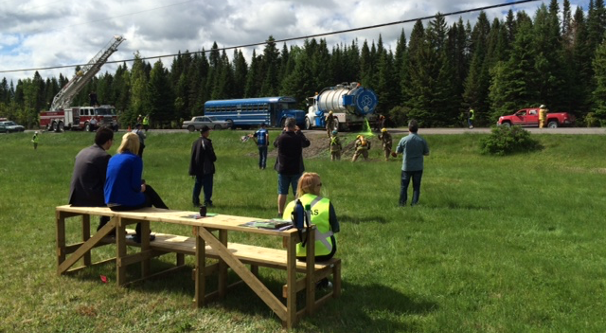The IEMAC reflects the principles embodied in the Agreement between the United States and Canada on Emergency Management Cooperation (AEMC), which is the bi-national agreement between the two countries to strengthen operation in emergency management for all types of incidents, emergencies and disasters. Consistent with federal plans and policies, the AEMC also encourages and facilitates cooperative emergency arrangements among state, provincial and local authorities on matters falling within their competence. The AEMC is overseen by the US/Federal Emergency Management Agency and Public Safety Canada.

During work to test risk assessment and capability based preparedness measurement methods in Eastern Canada between 2010 and 2012 the resultant risk scenarios amplified the importance of the flow of goods and services through national and international infrastructure. In 2013 and 2014, work proceeding under leadership from the IEMAC management group, formally called the International Emergency Management Group (IEMG) and with support from the Centre for Security Science, produced ten deliverables in the form of strategy, planning and operational response guidelines delivered to the IEMG through the Canadian Leadership appointed by the IEMG –Aaron Campbell, Director of Public Safety for Prince Edward Island. To that end, the project team researched and drafted three resolutions for approval by the IEMG for consideration at their scheduled meeting in Boston, MA, on November 18 and 19 2014 to consolidate support and “pull” for the ongoing work –see Appendix “A”. The draft minutes from that meeting are attached as Appendix “B” Section 12.0. Note that the minutes are in Draft form until the next scheduled meeting of the IEMG, at which point, barring objection, they will be approved. The work products are intended to be first drafts for consideration by the IEMG for eventual adoption as Technical Annexes to the IEMAC. The foundation work, building blocks and draft plans for implementation of an Eastern Canada HazMat Response within the five provinces exist but there is still much validation and verification work to be done to operationalize it. It also appears certain that this work will lead to full interoperability with New England States under the IEMAC and through collaborative common planning methods as supported by the CSS, DHS and FEMA (risk and capability assessments, Core Capability definitions and Resource Typing) as well as the Canada Border Services Agency, Transport Canada and Public Safety Canada. In recent years there have been two other international agreements signed between Canadian Provinces and their U.S. counterpart states, one in the Central/Western region and one in the Pacific Region.
- Develop a final joint methodology to drive long-term planning for Eastern Canada Provinces and New England States (and available to the Northern and Pacific agreement regions), which provide the precision necessary for a Technical Response Annex to the IEMAC.
- Verify and validate ten deliverables from the 2013 Targeted Investment project through exercises; through in-situ application of Resource Typing and a thorough legal review with feedback being used to 1) alter draft plans and Technical Annex drafts; 1)for reference by the Northern and Pacific Agreement Regions; 2)for final approval by the IEMG and recommendations to Premiers and Governors for formal implementation; 3) for interim and final review by SOREM with a goal of creating standardization and local, regional, provincial and federal interoperability at both the policy level and the technical response level.
- Final refinement of the Economic Loss Analysis as it relates to high risk scenarios for which there is a major Hazardous Materials component and establishing the direct relationship from that Economic Loss to a key sustainability input for HazMat response in EasternCanada and New England.
- Identify and develop, through an options analysis method, a pilot geographic-based system to track available resources, deployed resources and identify next-in-line resources for scaled response with optimized time scale and access routes identified to all emergency managers under the IEMAC.
- Produce a Hazardous Materials Base Risk Assessment and Capability Gap Analysis using a major NB/Maine border crossing, including a precise review of on-scene Incident Command and the Emergency Operations Centre(s) interface.
- Produce an Options Analysis with recommendations for a centralized system to manage administration and deployment (dispatching/tracking) of resources under the IEMAC. Guidance in this development is found in direct links to the CANADA–US ENHANCED RESILIENCY EXPERIMENT SERIES “CAUSE III”: NORTHEASTERN EXPERIMENT Scientific Report –Recommendation #5 and #10.
- Verify and validate the set of objectives through active participation by all stakeholders in CAUSE IV in year 2 of this project to the extent possible.
About the author:
